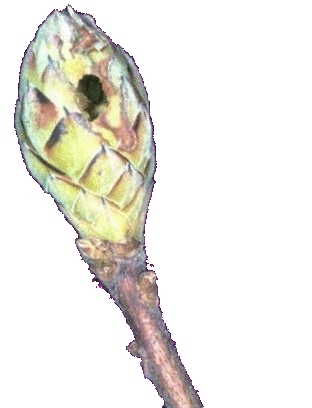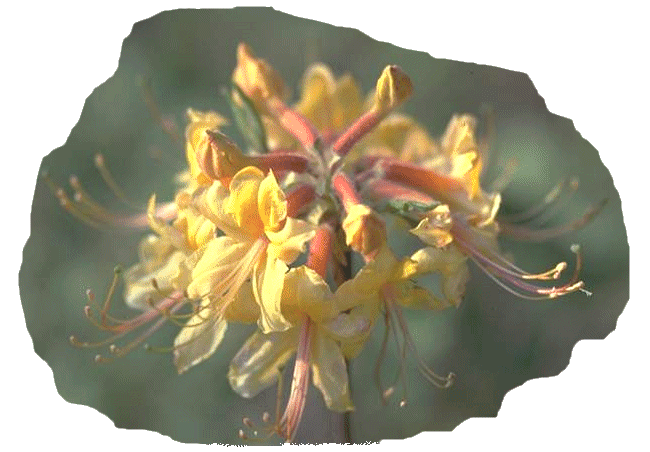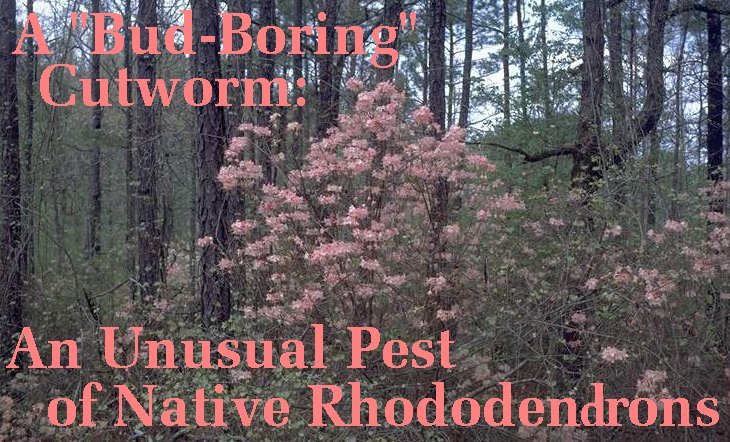
Native Alabama rhododendron (R. canescens) in full bloom.
L.L. Hyche and D.W. Speake1
For several years, growers of native rhododendrons in East-Central Alabama have been concerned about "borer" damage to flower buds. Damage has been most common on three spring-blooming species, Rhododendron canescens, R. austrinum, and R. alabamensis, under culture locally as ornamentals. Undamaged buds normally produce full and complete blooms; damaged buds shrivel and die, or produce incomplete, ragged blooms with only a few flowers. Preliminary studies by AAES researchers have identified the nocturnal pest as the variegated cutworm (Peridroma saucia)2.
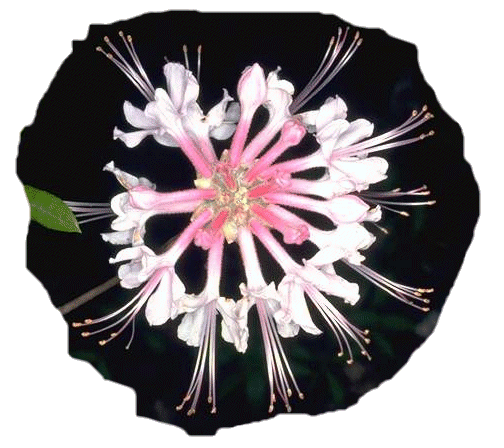
Complete blooms of R. canescens from undamaged flower buds.
Peridroma saucia is one of Alabama's most common cutworms and is known to feed on a wide variety of plants. In Alabama, the species is most commonly associated with vegetable, forage, and field crops. Its habits are variable, however, and reportedly include a tendency to climb and feed in the manner of climbing cutworms. It is as a climbing cutworm that the variegated cutworm causes damage to rhododendrons.
Damage to flower buds begins to appear most years during the first half of February (as early as January 28 in 1994). Larvae sometimes feed initially on the bud surface, but subsequently, and typically, bore into the bud. Thereafter, feeding is primarily on developing flower parts within the bud. The bud is not usually totally consumed, but its bloom potential is destroyed, or nearly so. The cutworm feeds and damages buds at night. Larvae have been collected from buds in the evening after dark and in early morning prior to sunrise, but have been found only rarely during daylight hours. Larvae apparently rest in duff, litter, or soil beneath plants during the day, and climb stems at night to feed.
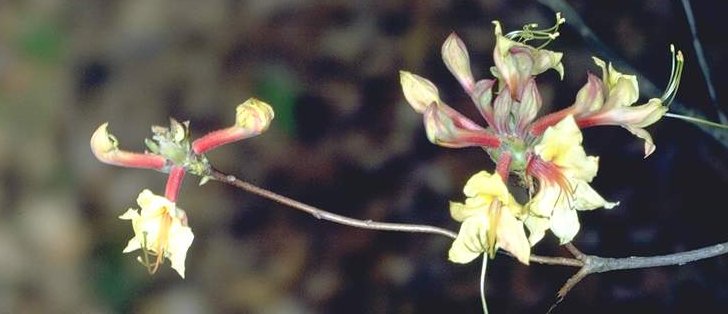
Typical incomplete blooms that developed from borer-damaged buds.
The variegated cutworm may complete three or four generations per year in Alabama. Adults are known to become active and lay eggs in early spring. However, cutworms collected from rhododendron buds in February and early March were ½ to 1¼ inches long, too large to be from a new, early spring generation. Consequently, these were apparently overwintering larvae from a late summer or fall generation of the previous season. When full-grown, the larva of the variegated cutworm is about 1¾ inches long. Color varies from light to dark brown to dark gray. The most conspicuous identifying characteristic is a series of light spots along the midline of the back.
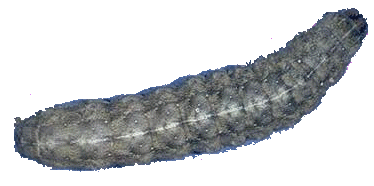
Fully grown larva of the variegated cutworm.
Specimen is about 1¾ inches long.
As noted, the variegated cutworm is usually found in various forage and field crops. While its habits and food plants are known to vary, its presence on rhododendron was heretofore unknown. Its habit of feeding on flower buds makes it a serious pest of some species of common native rhododendrons.

Mid-stage larva feeding in
typical manner on a flower bud.
Specimen is about 1 inch long. |
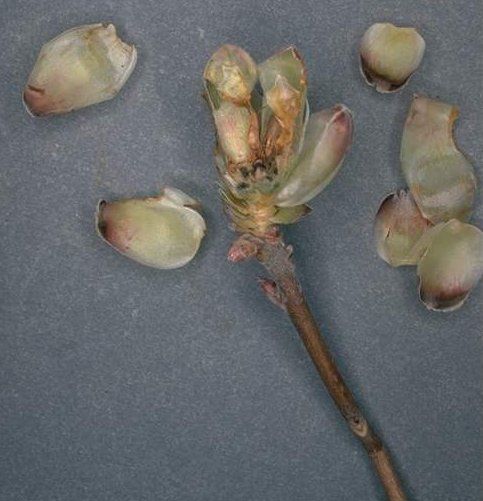
Hollow bud showing complete
destruction of developing flowers.
|
1Hyche is Associate Professor of Entomology. Speake is Professor Emeritus, Department of Zoology and Wildlife.
2This species was identified by Paul Estes, Associate Professor Emeritus of Entomology.
For additional information  lhyche@acesag.auburn.edu
lhyche@acesag.auburn.edu
| |

To Web Publications |
All photos courtesy of Lacy L. Hyche


